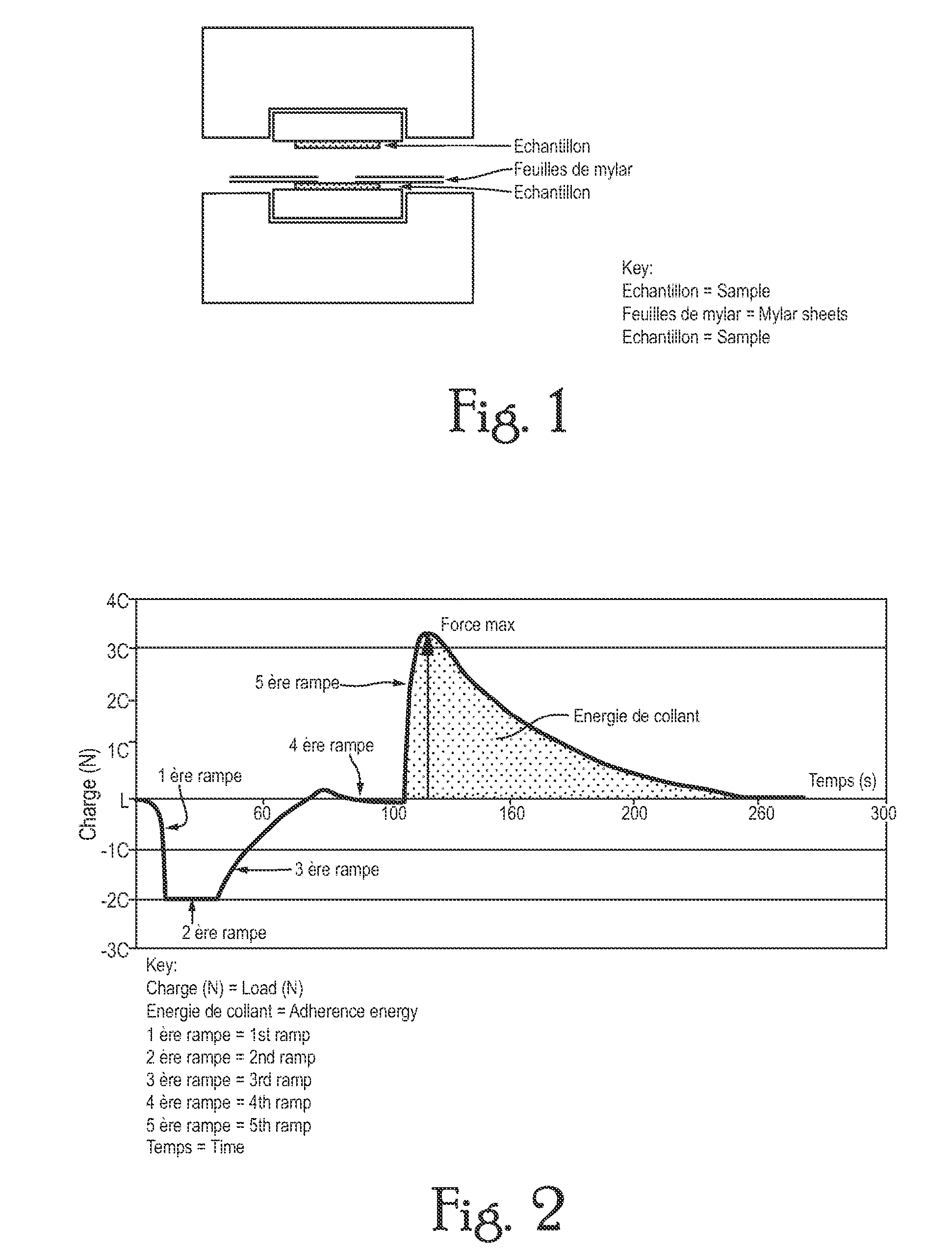Novolac alkylphenol resins, method of production thereof and use thereof as tackifying and/or reinforcing resins for rubbers
a technology of alkylphenol and alkylphenol resin, which is applied in the direction of layered products, synthetic resin layered products, chemistry apparatus and processes, etc., can solve the problems of difficult alkylphenol industrial level implementation, powerful vacuum, and delicate synthesis
- Summary
- Abstract
- Description
- Claims
- Application Information
AI Technical Summary
Benefits of technology
Problems solved by technology
Method used
Image
Examples
examples
[0033] The following examples illustrate the invention
[0034] Determination of the Rate of Free Alkylphenol(s)
[0035] The determination of the rate of residual PTOP is carried out using vapor phases chromatography on a Hewlett Packard 5890 Series II chromatograph equipped with an injector / divider, a CPV column, an FID detector and a recorder / integrator. The column is an OV1701® from OHYO VALLEY (length 30 m, internal diameter 0.25 mm, film thickness 0.25 μm). The measurement is carried out isothermically at 180° C., the period of analysis is 25 min. The injector temperature is 250° C., detector: 250° C. In a 10 ml bottle, about 0.03 g of reference standard BHT (2,6-di-tert-butyl-4-methylphenol) is weighed in, then about 1 g resin and finished with about 6 g RP acetone. The response coefficient is determined by injecting a PTOP / BHT standard under the same dilution conditions.
[0036] Measurement of the Softening Point Value
[0037] This measurement is carried out according to standard ...
examples 12 , 13 and 14 (table 2)
Examples 12, 13 and 14 (Table 2)
[0040] A mixture is made with fusion between a resin sold by Schenectady International, Inc. or CECA under the trade name R 7578P having a softening point value between 120 and 140° C. and a free PTOP content of less than 1% (novolac resin obtained by condensation of PTOP with formol) with different fatty acids indicated in Table 2. 120 g of resin are melted at 140° C., the fatty acid is then added, then the mixture is brought to 180° C. in order to ensure a homogeneous mixture within one to two hours.
TABLE 2Resin R 7578PFatty acidResin acc. to inventionPTOP ( )Melt. pt.(%)PTOP ( )Melt. Pt.Example%(° C.)Type%(° C.)120.6125stearic5.20.6110130.6125stearic8.00.6103140.6123lauric50.6107
example 15
[0041] Evaluation of the Tackifying Properties of the Resin From Example 11 in comparison to a commercial resin
[0042] Preparation of the Mixtures
[0043] The resins according to the invention are introduced into a mixture for a sidewall with a height of 4 parts per cent of elastomer (pce) with polybutadiene (BR) base and polyisoprene (IR) according to the following composition:
[0044] 60 pce of BR 1.4 cis sold by Bayer under the name Buna CB 10, non-staining, with viscosity ML (1+4) of 42-53 at 100° C. and of which the amount of 1.4 cis is 96%,
[0045] 40 pce of IR 1.4 cis sold by GoodYear under the name Natsyn 2200 with viscosity ML(1+4) of 70-90 at 100° C.,
[0046] 60 pce of carbon black sold by Degussa under the name Corax N550, with average diameter 47 m.c. and weight per surface area of 43 m2 / g,
[0047] 5 pce of aromatic oil sold by BP under the name Enerdex 65 with density 0.984 at 20° C. and with viscosity 25.5 cSt (mm2 / s) at 100° C.,
[0048] 5 pce stearic acid (activator),
[0049...
PUM
| Property | Measurement | Unit |
|---|---|---|
| softening point temperature | aaaaa | aaaaa |
| softening point temperature | aaaaa | aaaaa |
| softening point temperature | aaaaa | aaaaa |
Abstract
Description
Claims
Application Information
 Login to View More
Login to View More - R&D Engineer
- R&D Manager
- IP Professional
- Industry Leading Data Capabilities
- Powerful AI technology
- Patent DNA Extraction
Browse by: Latest US Patents, China's latest patents, Technical Efficacy Thesaurus, Application Domain, Technology Topic, Popular Technical Reports.
© 2024 PatSnap. All rights reserved.Legal|Privacy policy|Modern Slavery Act Transparency Statement|Sitemap|About US| Contact US: help@patsnap.com








